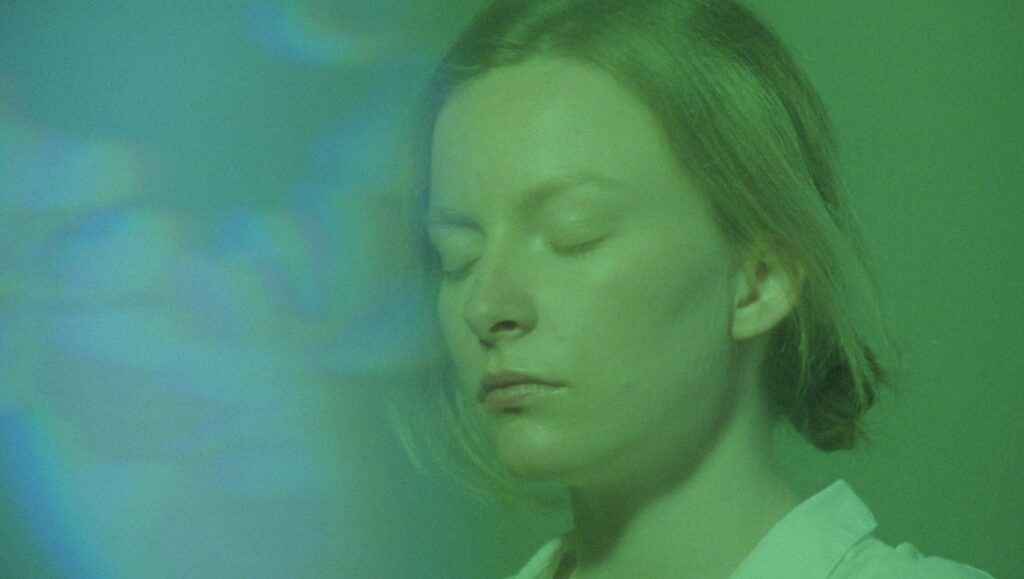How does one give shape to one’s experience, one’s grief? The question persists through the films of Canadian director Sofia Bohdanowicz, though it takes most literal form in her latest short, Point and Line to Plane, titled after the influential 1926 art theory text by Russian painter Wassily Kandinsky. In it, longtime collaborator Deragh Campbell once again plays a woman named Audrey Benac (first introduced in the 2016 feature Never Eat Alone), who here finds herself adrift in another country, reeling from the unexpected death of a friend. This loss — as well as everything else that can be said to happen in the film, which mostly consists of Audrey’s travels — is related in measured, diaristic voiceover, accompanied by a steady progression of images that are at times directly illustrative, always geometrically pleasing: the concrete spiral of New York’s Guggenheim Museum, the abstract paintings of Hilma af Klint, the staircase patterns of a crossword puzzle, a time-lapse shot of a mountain landscape. Without providing much in the way of narrative progression, these myriad sights and shapes nonetheless give Point and Line to Plane a sense of momentum, at once inciting and resisting our impulses to form connections between each successive cut. Bohdanowicz’s resourceful practice has often managed to maintain a distanced, but emotionally acute perspective on her subjects, and this film especially recognizes the extent to which meaning — of a painting, of a person’s death — derives from the associations that we are able to form, while also pointing up to the contingency of such connections. Like the picture frame that Audrey knocks over while house-sitting for a friend, our points of view are more unstable than we might know. So perhaps a person’s death is, in the end, the loss of both a life and a form of life. For to lose someone is to lose not just the sight of them, but also their way of seeing.
Published as part of NYFF 2020 — Dispatch 6.


Comments are closed.